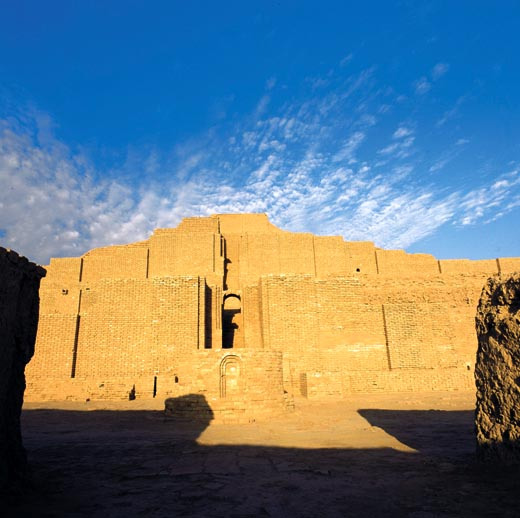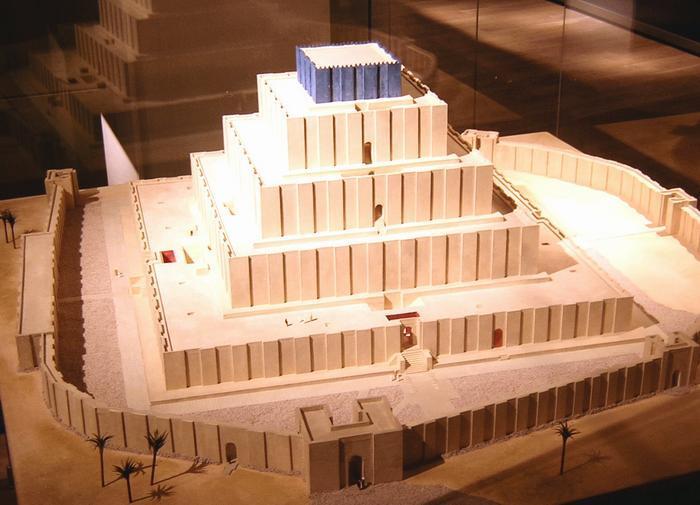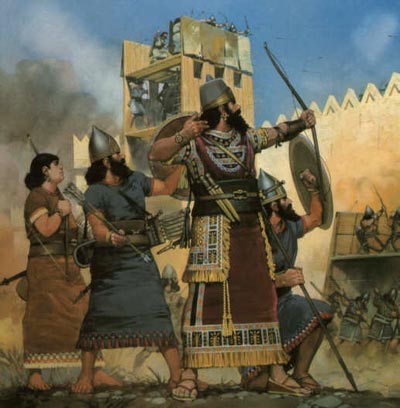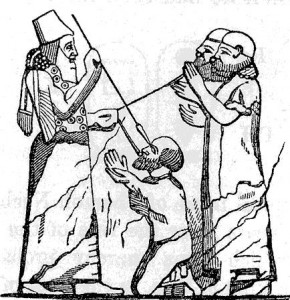The ancient Elamite site of Dur Untash or Choqa-zanbil (Persian:چغازنبيل- basket hill) in Iran’s Khuzestan province has been the focus of much academic attention in recent years. It is notable that Choqa-zanbil was the first Iranian archaeological site to be listed among the UNESCO World Heritage sites in 1979.
 Choqa-zanbil is located approximately eighty kilometers to the north of Ahvaz. The site was built by Elamite king Untash-Napirisha around 1250 BCE.
Choqa-zanbil is located approximately eighty kilometers to the north of Ahvaz. The site was built by Elamite king Untash-Napirisha around 1250 BCE.
The construction of Choqa-zanbil or Dur Untash has been attributed to Elamite king Untash-Napirisha (reigned approx. 1275 to 1240 BCE). The site was built to pay homage to the Elamite god Inshushinak. Note that the Elamite term Dur Untash is translated as the “town of Untash”. The site of Choqa-zanbil is protected by three concentric walls which are integral to the complex. The inner sector of Choqa-zanbil is occupied by a large ziggurat which was dedicated to Inshushinak.
The Choqa-zanbil ziggurat had been built over an older structure which had been a square-shaped temple that featured storage areas. This earlier structure had also been built by king Untash-Napirisha. It is notable that the ziggurat at this site is considered to be the best preserved example of such structures.
The middle sector of Dur Untash contains a total of eleven temples to accommodate a series of lesser Elamite gods. Archaeologists have noted that king Untash-Napirisha had intended to build a total of 22 temples but this project came to halt upon the king’s passing. The outer sector of Choqa-zanbil features underground tombs, regal palaces as well as a funerary palace.
A model reconstruction of Dur Untash or Choqa-zanbil. It has been suggested that King Untash-Napirisha may have been endeavoring to build a new religious site which would have united the Elamite gods from the lowlands and highlands. If this was the case, then the king may have intended to replace Susa as Elam’s main religious center.
Interestingly, the site of Choqa-zanbil remained inhabited until it violent destruction by the Assyrian king Ashurbanipal (reigned approx. 668–627 BCE) in 640 BCE. The Assyrians inflicted much damage to Elam, however the region’s culture and language endured and was to be passed onto the arriving Iranian peoples, notably the Persians.
Assyrian warrior-king Ashurbanipal engaged in a major siege battle against Dur Untash (modern-day Choqa-zanbil). By 639 BCE the Assyrian armies had completely won the war and Elam was plundered and devastated. The armies of the later Achaemenids adopted various Assyrian features into their military system, notably the concept of the “Chiliarch” which was a type of commander in chief. Assyrian levies were also present in the armies of Xerxes (reigned 486-465 BCE) during his invasion of Greece in 480 BCE.
The devastation wrought by Ashurbanipal upon Elam is seen in his proclamation below:
“For a distance of a month and twenty-five days’ journey I devastated the provinces of Elam. Salt and sihlu (a type of course plant) I scattered over them . . . The dust of Susa, Madaktu, Haltemash and the rest of their cities I gathered together and took to Assyria . . . The noise of people, the tread of cattle and sheep, the glad shouts of rejoicing, I banished from its fields. Wild asses, gazelles and all kinds of beasts of the plain I caused to lie down among them, as if at home.”
Ancient Assyrians blinding their captives. Despite the devastation wrought upon Elam by the armies of Assyria, the Elamites survived, with much of their legacy being passed onto the Iranian-speaking peoples.







